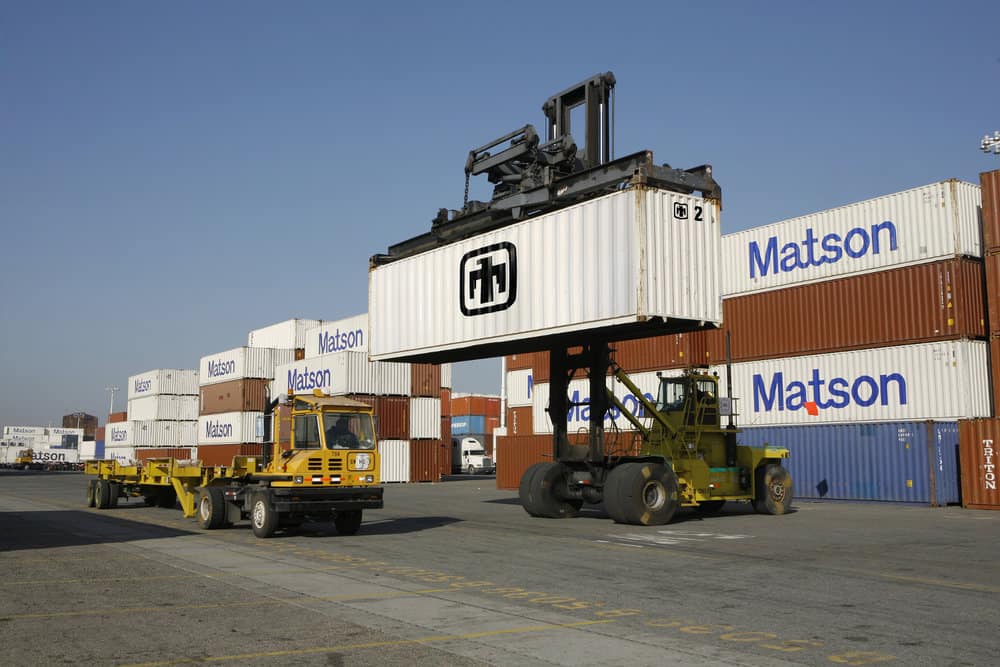
Tracking and visibility will speed process for truckers hauling into and out of ports
Final mile logistics can be a pain. Picture a 40-foot container traveling from Mainland China to a suburb of Los Angeles. It often experiences more complications between the Port of LA and final destination than it does during its international trip. But why?
A variety of factors contribute to headaches of the final mile. Culprits that immediately come to mind include equipment availability, congestion, communication, and documentation. While still on the horizon, blockchain may help alleviate some of those final mile difficulties.
Concept or reality?
Blockchain will revolutionize global supply chains across the board. In concept, it could apply to every conceivable aspect of logistics from transactions to tracking to asset management. In theory, this technology can further secure and streamline every step of the supply chain. However, its full-scale application still remains to be seen. Many people are familiar with Bitcoin. Fewer have heard of blockchain. Some professionals know about the benefits of blockchain, however the ledger remains an enigma to most.
Blockchain is working now. The decentralized database ledger documents all transactions made using Bitcoin. The primary perks include speed, transparency and security. Nodes in the network create a block for each transaction that is irreversible and tamper-proof. Conceptually, it works like a Google Docs spreadsheet, updating and verifying exchanges of currency and information in real time.
The concept of blockchain seems abstruse. Think of it as an extension of the internet. Financial institutions will likely harness it first. The trade and transportation community will be among the early adopters as companies begin to leverage blockchain-enabled technology. Any industry that requires visibility and transparency will benefit from blockchain.
IBM is one of the pioneering companies working with supply chain service providers and shipping companies to make this happen. Recently, the tech giant partnered with Maersk to test blockchain tracking and document exchange for specific trade lanes and commodities.
Tracking
When vessels arrive at the port, visibility becomes obscured. This creates pain points for truckers scheduled to recover available containers. Blockchain-enabled tracking has the potential to update live Customs clearance information simultaneously with container availability. Overall, this could help mitigate wait time, increase the number of local drays and decrease pollution in the terminals.
Drivers will play a part in tracking as well. While en route, drivers can seamlessly enter information about traffic conditions and delays that will create event code blocks in blockchain tracking systems. They can also measure useful milestones such as drive time to track their hours and estimate how many loads they can handle in a given day.
Related:
Is a blockchain revolution about to hit the supply chain?
A guide to blockchain
For truck fleets, blockchain opens doors to improved efficiency
Blockchain tracking will prove useful for all parties involved in final mile delivery. As consignees keep closer tabs on inbound containers, they can maneuver staff accordingly to assist in labor-intensive live unloads. They will also know ahead of time if any delays occur. The nature of the system will protect both consignees and drivers if any disputes arise in regards to wait time or additional charges.
Gray chassis
Remember the Los Angeles port congestion in 2015? Peak season congestion, work slowdowns and chassis availability created the perfect storm for ultimate inefficiency. Containers sat on vessels and in the port complexes for weeks waiting to be picked up. Perishable items spoiled, retailers lost billions and many importers considered moving operations closer to East Coast ports.
One of the solutions created to resolve this issue was gray chassis. The three major equipment leasing companies pooled their chassis to make them available upon demand regardless of who owns them. The driver also doesn’t need to return the chassis to its original terminal. However, chassis and container equipment shortages still affect drivers during peak seasons. Sharing physical assets also presents risk to those who own them. Blockchain will help streamline equipment sharing, increase security of pooling assets and help notify drivers once chassis and containers become available.
Documentation
Missing or incorrect documentation also holds up containers despite improvements in digitization. Bills of lading entered in blockchain will improve visibility and reduce the usage of paper. Since the system vastly improves security, it may reduce the need for original bills of lading and ease the overall title transfer process.
PODs
When drivers deliver ocean shipments, PODs can be uploaded in real time as a block. This maintains accurate records of the delivery milestone and can help prevent disputes.
Looking forward
Blockchain will play a part in improving security, efficiency and visibility in global supply chains. Truckers will benefit in the final mile from port to door as the technology will help optimize port operations. In the coming years, trucking companies will look to partner with 3PLs and importers utilizing blockchain-enabled technologies. Currently, blockchain is only being tested in logistics applications. It’s still difficult to predict when blockchain will fully take hold in practice.
